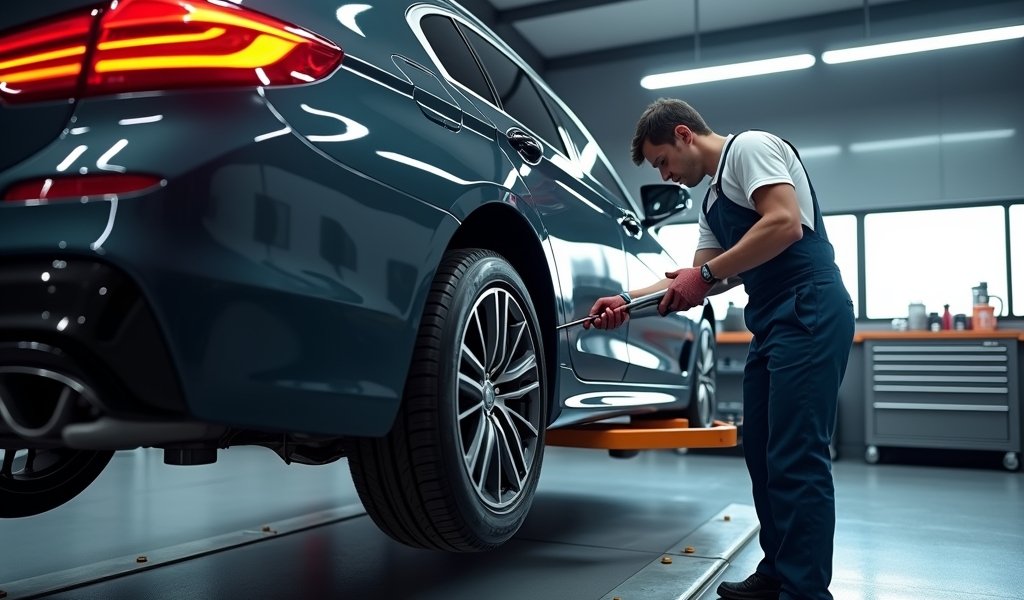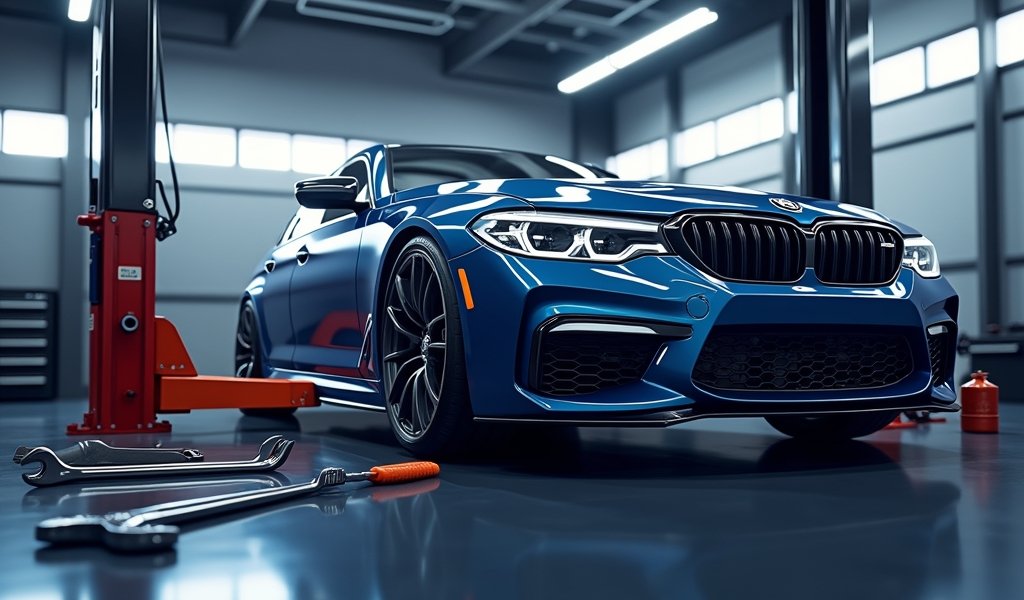Overview
This article provides ten essential vehicle maintenance practices that extend a car’s lifespan, including following manufacturer maintenance schedules, regular fluid maintenance, tire care, and understanding warning systems. Proper maintenance not only prevents expensive repairs but also improves performance, safety, and resale value while creating a relationship with your vehicle built on consistent care rather than crisis management.
Table of Contents
- Introduction
- Follow Your Vehicle’s Maintenance Schedule
- Regular Oil Changes: The Lifeblood of Your Engine
- Fluid Maintenance: Keeping Your Car’s Systems Healthy
- Air Filter Replacement: Let Your Engine Breathe
- Tire Maintenance: Where Rubber Meets Road
- Battery Care: Power Up Your Reliability
- Brake System: Safety First
- Belts and Hoses: The Unsung Heroes
- Understanding Warning Lights
- Keep It Clean: Preservation Through Cleanliness
- Conclusion
- Frequently Asked Questions
Introduction
Your car isn’t just a pile of metal and rubber—it’s your daily commuting companion, weekend adventure partner, and sometimes even your emergency shelter. After 20 years under the hood, I’ve seen firsthand how regular maintenance transforms a vehicle’s lifespan from merely adequate to impressively lengthy.
Think of car servicing as preventative healthcare. Just as you wouldn’t wait until you’re seriously ill to see a doctor, you shouldn’t wait for a breakdown to service your vehicle. Regular maintenance helps identify potential issues before they become expensive problems.
Many drivers skip routine maintenance to save a few bucks, only to face repair bills ten times higher down the road. A properly maintained vehicle runs more efficiently, performs better, maintains its value, and most importantly, keeps you safer on the road.
In this guide, I’ll walk you through ten essential car maintenance tips that will help you keep your vehicle running smoothly for years to come. These aren’t just theoretical recommendations—they’re practical steps I’ve applied throughout my career as a mechanic to help vehicles reach impressive mileages without major issues.
Follow Your Vehicle’s Maintenance Schedule
Your car’s manufacturer didn’t create a maintenance schedule just to sell service appointments. They designed a specific care regimen based on extensive testing of your exact vehicle model.
This schedule is your roadmap to longevity. It tells you exactly when to change fluids, replace components, and perform inspections based on your car’s specific needs. Think of it as your vehicle’s personalized care plan.
Your owner’s manual contains this golden information, but if you’ve misplaced it, most manufacturers offer digital versions online. Alternatively, many repair shops can look up your vehicle’s maintenance schedule using your VIN number.
Following this schedule is crucial for three key reasons: it keeps your warranty valid, prevents premature wear, and helps maintain your vehicle’s value. One skipped timing belt replacement can lead to catastrophic engine damage that costs thousands to repair.
Pro tip: Create calendar reminders for upcoming service milestones based on your typical monthly mileage. This simple step keeps maintenance from falling through the cracks of your busy life.

Regular Oil Changes: The Lifeblood of Your Engine
If there’s one maintenance task you should never skip, it’s changing your oil. Engine oil lubricates moving metal parts that would otherwise create friction, generate excessive heat, and ultimately destroy your engine.
Fresh oil carries away heat and contaminants while reducing metal-on-metal contact. As oil ages, it breaks down, loses its viscosity, and becomes less effective at protecting your engine. The resulting friction can accelerate wear on vital engine components.
How often should you change your oil? While 3,000 miles was once the standard recommendation, modern engines and synthetic oils have extended this interval. Most newer vehicles can safely go 5,000-10,000 miles between changes. However, check your owner’s manual for the specific recommendation for your model.
Your driving habits matter too. If you frequently make short trips (under 10 miles), drive in extreme temperatures, or regularly tow heavy loads, you should change your oil more frequently than the maximum interval.
When choosing oil, consider synthetic options for better protection. While they cost more upfront, synthetic oils often allow longer intervals between changes and provide superior protection—especially in extreme temperatures. This makes them actually more economical in many cases, not to mention better for your engine.
During oil changes, always replace the filter too. A fresh filter removes contaminants more effectively, reducing engine wear and extending the useful life of your oil. It’s a small additional cost that pays significant dividends in engine protection.
Fluid Maintenance: Keeping Your Car’s Systems Healthy
Your vehicle relies on multiple specialized fluids to operate properly. Each fluid has its own replacement interval and specific requirements.
Transmission fluid lubricates your transmission’s moving parts and helps transfer power from the engine to the wheels. Most automatic transmissions should have their fluid changed every 30,000-60,000 miles. The fluid should be red or pink—if it’s brown or smells burnt, it needs immediate attention.
Brake fluid is hygroscopic, meaning it absorbs moisture from the air over time. This moisture lowers the fluid’s boiling point and can cause brake fade during heavy braking. Most manufacturers recommend replacing it every 2-3 years regardless of mileage.
Coolant (antifreeze) prevents your engine from freezing in winter and overheating in summer while providing corrosion protection for internal engine components. Modern coolants last longer than older formulations, typically requiring replacement every 5 years or 100,000 miles.
Power steering fluid makes turning your steering wheel easier. Check its level monthly and look for any discoloration or unusual smell that could indicate system issues. Most vehicles don’t specify regular replacement intervals, but changing it every 50,000 miles is good preventative maintenance.
When checking fluids, always ensure your car is on level ground for accurate readings. Keep a log of fluid services and check levels regularly between services. Catching a leak early can prevent significant damage and expensive repairs.
Air Filter Replacement: Let Your Engine Breathe
Your engine needs a precise mixture of fuel and clean air to run efficiently. The air filter prevents dust, bugs, and debris from entering your engine while allowing sufficient airflow for combustion.
A clogged air filter restricts airflow, forcing your engine to work harder and use more fuel for the same performance. This can lead to reduced power, lower fuel economy, and even increased emissions.
Most manufacturers recommend replacing the air filter every 15,000-30,000 miles, but this interval should be shortened if you drive on unpaved roads or in dusty conditions. Visual inspection is an easy way to determine if replacement is needed—hold your filter up to a light source, and if light doesn’t pass through easily, it’s time for a new one.
Replacing an air filter is typically an easy do-it-yourself job that requires no special tools. Your owner’s manual will show the filter’s location, which is usually accessible by removing a few clips or screws. The part itself typically costs $10-20, making this one of the most cost-effective maintenance tasks.
While you’re at it, consider checking your cabin air filter as well. This filter keeps the air inside your vehicle clean by trapping pollen, dust, and pollutants. A fresh cabin filter improves air quality inside your car and helps your climate control system work more efficiently.

Tire Maintenance: Where Rubber Meets Road
Your tires are literally where the rubber meets the road, making them crucial for safety, handling, and fuel economy. Proper tire maintenance involves several key practices.
Check tire pressure monthly and before long trips. Underinflated tires wear faster, reduce fuel economy, and can overheat on long drives, potentially causing blowouts. Overinflated tires provide a harsh ride and wear unevenly in the center. The correct pressure specification is found on a sticker inside your driver’s door jamb or in your owner’s manual—not on the tire sidewall, which shows maximum pressure.
Rotate your tires every 5,000-7,000 miles to ensure even wear. Front tires typically wear differently than rear tires due to steering forces and weight distribution. Regular rotation extends tire life and maintains consistent handling characteristics.
Have your wheel alignment checked annually or if you notice your vehicle pulling to one side. Proper alignment ensures even tire wear and optimal handling. It’s especially important to check alignment after hitting large potholes or curbs.
Check tread depth regularly using the penny test—insert a penny into the tread groove with Lincoln’s head upside down. If you can see the top of Lincoln’s head, your tread depth is below 2/32 inch, and the tire should be replaced immediately for safety.
Don’t forget to check your spare tire! There’s nothing worse than having a flat tire only to discover your spare is also flat. Check its pressure quarterly and ensure all the necessary changing tools are in your vehicle.
Battery Care: Power Up Your Reliability
Your vehicle’s battery provides the electrical current needed to start your engine and power electronics. Without proper care, batteries can fail prematurely, leaving you stranded.
Most automotive batteries last 3-5 years, depending on climate and usage. Extreme temperatures—both hot and cold—reduce battery life. In very hot climates like Arizona or Texas, batteries may last only 2-3 years.
Keep battery terminals clean and tight. Corrosion on terminals creates resistance that can prevent proper charging and starting. If you notice a white or blue powdery substance on your terminals, clean them using a mixture of baking soda and water, along with a small wire brush.
If your vehicle sits unused for extended periods, consider using a battery maintainer or trickle charger. These devices provide just enough current to counteract normal self-discharge, extending battery life significantly.
Watch for warning signs of battery failure: slow engine cranking, dimming headlights during idling, electrical system issues, or a battery/check engine light on your dashboard. Many auto parts stores offer free battery testing—take advantage of this service annually, especially before extreme weather seasons.
Remember that modern vehicles have increasingly complex electrical systems that place greater demands on batteries. If you add power-hungry accessories like dash cams or additional lighting, you might need to upgrade to a higher-capacity battery.
Brake System: Safety First
Your brake system is your vehicle’s most critical safety feature. No matter how well the rest of your car runs, compromised brakes put you and others at risk.
Brake pads wear with normal use and typically need replacement every 30,000-70,000 miles. This wide range depends on your driving style, environment, and pad quality. City driving with frequent stops wears pads faster than highway cruising.
Listen for warning signs: squealing indicates wear indicators are touching the rotors, while grinding suggests metal-on-metal contact from completely worn pads. Visual inspection can confirm wear status—most brake pads should be replaced when they reach about 1/4 inch thickness.
Brake rotors (discs) should be inspected during pad replacement. They can be resurfaced if they’re above minimum thickness and have no major defects like cracks or excessive scoring. Otherwise, replacement is necessary for proper braking performance.
Brake fluid absorbs moisture over time, lowering its boiling point and potentially causing brake fade during hard stops. Have it flushed and replaced every 2-3 years, regardless of mileage. The fluid should be clear to amber in color—dark fluid indicates contamination.
Don’t forget the brake hoses and lines. Rubber hoses can deteriorate and crack with age, while metal lines can corrode, especially in regions where road salt is used. Have these inspected during regular maintenance, particularly on vehicles over 7 years old.
Belts and Hoses: The Unsung Heroes
Belts and hoses don’t get much attention until they fail, but these rubber components are critical to your engine’s operation. They’re also among the most likely parts to fail as they age and are exposed to heat cycles.
Modern serpentine belts drive multiple accessories—the alternator, water pump, power steering pump, and A/C compressor. Unlike older V-belts, they don’t show obvious cracks before failing. Instead, they wear gradually and can slip or break suddenly.
Have your serpentine belt inspected annually and replace it every 60,000-100,000 miles even if it looks okay. Special tools can measure the belt’s wear patterns that aren’t visible to the naked eye.
Timing belts (found in many vehicles) are critical components that synchronize your engine’s valves and pistons. If this belt breaks, serious engine damage can result in interference engines. Replacement intervals vary by manufacturer but typically fall between 60,000-100,000 miles. This is one maintenance item you don’t want to postpone.
Coolant hoses carry hot pressurized coolant throughout your engine. They deteriorate from the inside out, making visual inspection less reliable. Feel hoses when the engine is cool—they should be firm but slightly pliable. Soft, mushy sections or bulges indicate imminent failure.
Consider replacing all major hoses preventatively at around 100,000 miles or 7-10 years, even if they look okay externally. This proactive approach prevents unexpected failures that can lead to overheating and possible engine damage.
Understanding Warning Lights
Modern vehicles are equipped with sophisticated computer systems that monitor virtually every aspect of operation. Those dashboard warning lights aren’t there for decoration—they’re your car’s way of communicating problems.
The check engine light (CEL) is the most misunderstood warning. It doesn’t always mean “impending disaster,” but it should never be ignored. This light indicates the onboard diagnostic system has detected an issue affecting emissions or engine performance. The problem could range from a loose gas cap to serious engine troubles.
When the CEL illuminates, have the trouble codes read promptly. Many auto parts stores will do this for free, or you can purchase an inexpensive code reader for home use. Understanding the specific code helps determine the urgency of repairs.
Some warning lights require immediate attention. If you see the oil pressure, engine temperature, or brake system warning lights illuminate, pull over safely as soon as possible and shut off the engine. Continuing to drive could cause severe damage.
The battery/charging system light indicates your vehicle isn’t charging properly. While you can typically drive to a nearby service facility, don’t delay repairs—your vehicle may stop running once the battery’s reserve charge is depleted.
Learn what each symbol in your dashboard means before you need to know. Your owner’s manual includes a complete guide to warning lights specific to your vehicle. Taking a few minutes to review this information can save you stress and potential damage later.
Keep It Clean: Preservation Through Cleanliness
Vehicle cleanliness isn’t just about looking good—it’s a legitimate maintenance concern that affects your car’s longevity and value.
Regular washing removes corrosive substances that damage paint and undercarriage components. Road salt, bird droppings, tree sap, and industrial fallout all accelerate corrosion if left on surfaces. In winter or coastal regions, undercarriage washing is particularly important to remove salt that can cause rapid rusting.
Waxing your vehicle 2-4 times yearly provides a protective barrier against environmental contaminants. Modern synthetic waxes and sealants can protect for months between applications, making this task less burdensome than in years past.
Interior cleaning preserves surfaces and prevents premature wear. Vacuum regularly to remove abrasive dirt and debris from carpets and upholstery. Clean spills promptly to prevent staining, and use appropriate protectants on dashboard surfaces to prevent UV damage and cracking.
Don’t forget your engine bay. A moderately clean engine compartment makes fluid leaks easier to spot and prevents built-up grime from trapping heat against components. Just be careful with water around electrical connections—a gentle cleaning with appropriate products is best.
A clean car is also easier to service. Mechanics appreciate working on well-maintained vehicles, and you’re more likely to notice developing problems during cleaning. It’s a win-win that takes minimal effort but delivers meaningful benefits.
Conclusion
Proper vehicle maintenance isn’t complicated, but it does require consistency and attention. The ten service areas we’ve covered represent the core maintenance needs of virtually any passenger vehicle.
By following your manufacturer’s service checklist and incorporating these maintenance practices, you’re making an investment in your vehicle’s reliability, performance, and longevity. Every dollar spent on preventative maintenance potentially saves several dollars in future repairs.
Remember that your car is a complex machine with interdependent systems. Neglecting one maintenance area often affects others, creating a cascade of problems that becomes increasingly expensive to resolve.
If you’re not comfortable performing some of these maintenance tasks yourself, establish a relationship with a reputable service facility. A trustworthy mechanic who knows your vehicle’s history becomes a valuable partner in keeping it running smoothly for years to come.
Take pride in maintaining your vehicle properly. The road ahead is much more enjoyable when traveled in a reliable, well-performing car that you know has been given the care it deserves.
Implementing routine vehicle maintenance isn’t just about avoiding breakdowns—it’s about optimizing performance, maximizing fuel efficiency, ensuring safety, and protecting your investment. Your car takes care of you every day; return the favor by giving it the maintenance attention it deserves.
Frequently Asked Questions
How often should I service my car?
Follow your manufacturer’s recommended service intervals in your owner’s manual. Most modern vehicles require major service every 15,000-30,000 miles, with oil changes and basic inspections needed more frequently.
Can I service my car myself without voiding the warranty?
Yes, under the Magnuson-Moss Warranty Act, you can perform your own maintenance without voiding your warranty. Just keep detailed records and receipts of parts and fluids used that meet manufacturer specifications.
What’s the minimum maintenance I should do if I’m on a tight budget?
At minimum, maintain proper oil change intervals, check tire pressure monthly, replace air filters as scheduled, and never ignore warning lights or unusual noises. These basics prevent the most common and expensive failures.
How do I know if a mechanic is overcharging or recommending unnecessary services?
Request a written estimate before authorizing work and compare it with your manufacturer’s maintenance schedule. Don’t hesitate to get a second opinion for expensive repairs, and ask for the old parts back as verification.
What’s the best way to keep track of my car’s maintenance history?
Keep a dedicated maintenance logbook in your glove compartment or use a digital maintenance tracking app. Record the date, mileage, service performed, parts used, and costs for each service visit.


Pingback: ABS Brake Service Explained: 7 Proven Tips for Safe Stopping - knowsyourcar.com